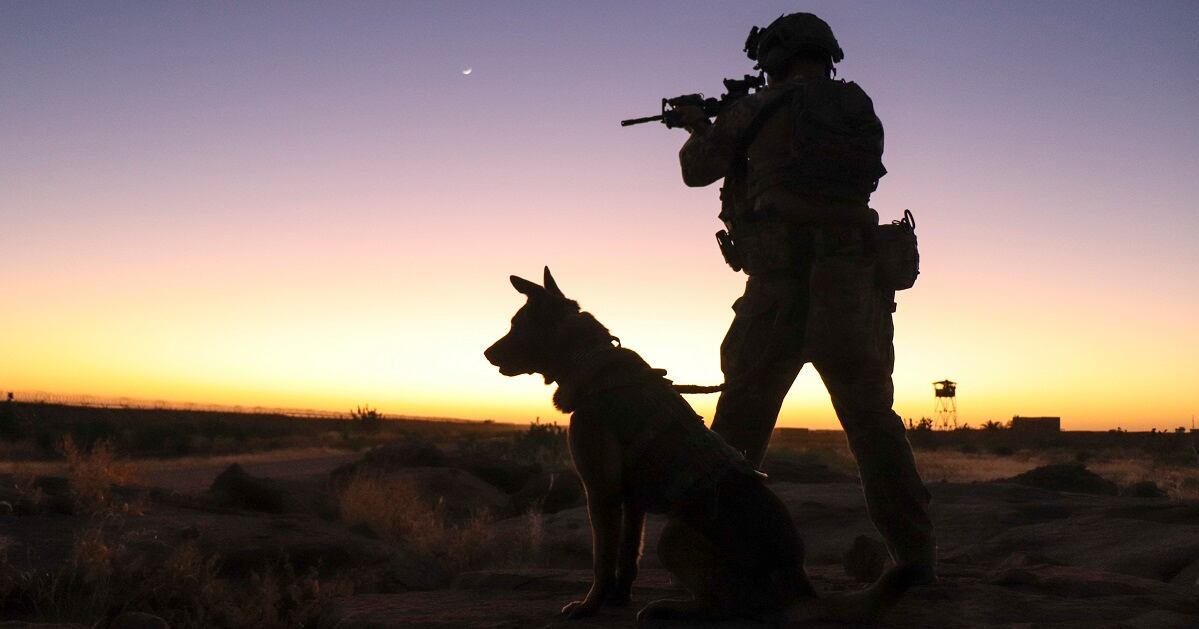What would it take for the U.S. military to “buy American” when it comes to military working dogs?
That’s what Sen. Richard Blumenthal, D-Conn., wants to know. He pushed for more domestically raised military working dogs in a provision in this year’s Senate Armed Services Committee’s report accompanying the Senate’s version of the 2020 National Defense Authorization Act. Blumenthal wanted the Defense Department and Air Force to calculate the cost to establish and sustain a dog breeding program on American soil.
The DoD’s military working dog training program is managed by the Air Force’s 341st Training Squadron, located at Lackland Air Force Base near San Antonio, Texas. The 341st trains approximately 350 dogs per year for all four branches of the DoD, its commander, Lt. Col. Matthew Kowalski, told Military Times.
The issue is that dogs start training there around 18 months of age, meaning that breeders and vendors serving the military incur a significant cost over time raising puppies that they could sell to civilians at a much younger age. Few American breeders are up to the task, and countries around the world are paying top dollar for the specialized breeds they need for their security services.
According to the SASC report, the Air Force recognizes there aren’t enough domestic breeders “with the expertise, genetic quality, and potential capacity” to meet the DoD’s demand for dogs.
As a result, according to Bloomberg Government which first reported Blumenthal’s concerns, Air Force data reveals 407 of the 427 dogs it purchased in 2019 were born overseas, primarily in Europe. Kowalski, the 341st Training Squadron commander, explained to the Military Times that an Air Force civilian and former dog handler in his unit directs dog purchasing, and that “the procurement of military working dogs [for the DoD] is done almost exclusively by” his squadron. The Air Force data also shows that even dogs obtained from vendors in the United States cost $3,500 more on average, because many American vendors import dogs from Europe’s limited supply and then sell them to the DoD with a significant markup. The Pentagon can’t afford not to buy the dogs, though.
Dogs have been an integral part of the U.S. military since World War II and “have served in some capacity in every major war since,” explained Hannah Palsa, a historian of American military canines at Kansas State University. In addition to their roles supporting U.S. personnel on the battlefield in patrolling and explosives detection, she said, military dogs have filled in as messengers and guards.
During WWII, American families donated their dogs through Dogs for Defense to be trained to support the war effort. Today’s military working dogs are quite literally a different breed, though –– mostly German shepherds, Dutch shepherds, and Belgian Malinois — and they’re becoming even more expensive and difficult to find. The SASC report notes that “due to the finite number of breeders overseas, as well as rising market demand, the cost for the Air Force and other agencies to procure whelped military working dogs from Europe is skyrocketing.”
In a statement provided to Military Times, Blumenthal explained that he was “surprised” to discover that “the vast majority of our working dogs are actually born and bred in Europe, which raises costs and puts us in competition with other countries.” The SASC’s report on the NDAA expresses support for a “year-long assessment [that] enabled the Department [of Defense] to identify requirements necessary to…breed military working dogs domestically in order to sustain a stable, secure supply and to minimize costs.”
Blumenthal recognizes that the structural and supply chain issues preventing domestic dog procurement won’t change overnight, though. “Our provision in this year’s NDAA takes the first step toward that goal by assessing what resources are necessary for the DoD to meet increasing demands for military working dogs by supporting American breeders.”
Davis Winkie covers the Army for Military Times. He studied history at Vanderbilt and UNC-Chapel Hill, and served five years in the Army Guard. His investigations earned the Society of Professional Journalists' 2023 Sunshine Award and consecutive Military Reporters and Editors honors, among others. Davis was also a 2022 Livingston Awards finalist.





